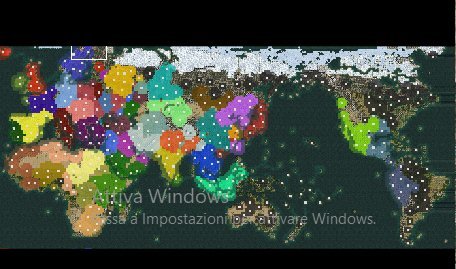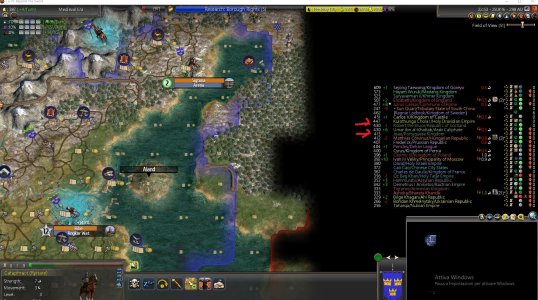sys.path = ['..\\WARLORDS\\ASSETS\\PYTHON\\SYSTEM\\email', '..\\WARLORDS\\ASSETS\\PYTHON\\SYSTEM\\encodings', '..\\WARLORDS\\ASSETS\\PYTHON\\SYSTEM\\wx', '..\\WARLORDS\\ASSETS\\PYTHON\\SYSTEM\\wx\\build', '..\\WARLORDS\\ASSETS\\PYTHON\\SYSTEM\\wx\\lib', '..\\WARLORDS\\ASSETS\\PYTHON\\SYSTEM\\wx\\locale', '..\\WARLORDS\\ASSETS\\PYTHON\\SYSTEM\\wx\\py', '..\\WARLORDS\\ASSETS\\PYTHON\\SYSTEM\\wx\\tools', '..\\WARLORDS\\ASSETS\\PYTHON\\SYSTEM\\wx\\lib\\colourchooser', '..\\WARLORDS\\ASSETS\\PYTHON\\SYSTEM\\wx\\lib\\editor', '..\\WARLORDS\\ASSETS\\PYTHON\\SYSTEM\\wx\\lib\\floatcanvas', '..\\WARLORDS\\ASSETS\\PYTHON\\SYSTEM\\wx\\lib\\masked', '..\\WARLORDS\\ASSETS\\PYTHON\\SYSTEM\\wx\\lib\\mixins', '..\\WARLORDS\\ASSETS\\PYTHON\\SYSTEM\\wx\\lib\\ogl', '..\\WARLORDS\\ASSETS\\PYTHON\\SYSTEM\\wx\\locale\\af', '..\\WARLORDS\\ASSETS\\PYTHON\\SYSTEM\\wx\\locale\\ca', '..\\WARLORDS\\ASSETS\\PYTHON\\SYSTEM\\wx\\locale\\cs', '..\\WARLORDS\\ASSETS\\PYTHON\\SYSTEM\\wx\\locale\\da', '..\\WARLORDS\\ASSETS\\PYTHON\\SYSTEM\\wx\\locale\\de', '..\\WARLORDS\\ASSETS\\PYTHON\\SYSTEM\\wx\\locale\\el', '..\\WARLORDS\\ASSETS\\PYTHON\\SYSTEM\\wx\\locale\\es', '..\\WARLORDS\\ASSETS\\PYTHON\\SYSTEM\\wx\\locale\\eu', '..\\WARLORDS\\ASSETS\\PYTHON\\SYSTEM\\wx\\locale\\fi', '..\\WARLORDS\\ASSETS\\PYTHON\\SYSTEM\\wx\\locale\\fr', '..\\WARLORDS\\ASSETS\\PYTHON\\SYSTEM\\wx\\locale\\hi', '..\\WARLORDS\\ASSETS\\PYTHON\\SYSTEM\\wx\\locale\\hu', '..\\WARLORDS\\ASSETS\\PYTHON\\SYSTEM\\wx\\locale\\id', '..\\WARLORDS\\ASSETS\\PYTHON\\SYSTEM\\wx\\locale\\it', '..\\WARLORDS\\ASSETS\\PYTHON\\SYSTEM\\wx\\locale\\ja', '..\\WARLORDS\\ASSETS\\PYTHON\\SYSTEM\\wx\\locale\\lv', '..\\WARLORDS\\ASSETS\\PYTHON\\SYSTEM\\wx\\locale\\nb', '..\\WARLORDS\\ASSETS\\PYTHON\\SYSTEM\\wx\\locale\\nl', '..\\WARLORDS\\ASSETS\\PYTHON\\SYSTEM\\wx\\locale\\pl', '..\\WARLORDS\\ASSETS\\PYTHON\\SYSTEM\\wx\\locale\\pt_BR', '..\\WARLORDS\\ASSETS\\PYTHON\\SYSTEM\\wx\\locale\\ru', '..\\WARLORDS\\ASSETS\\PYTHON\\SYSTEM\\wx\\locale\\sl', '..\\WARLORDS\\ASSETS\\PYTHON\\SYSTEM\\wx\\locale\\sv', '..\\WARLORDS\\ASSETS\\PYTHON\\SYSTEM\\wx\\locale\\tr', '..\\WARLORDS\\ASSETS\\PYTHON\\SYSTEM\\wx\\locale\\uk', '..\\WARLORDS\\ASSETS\\PYTHON\\SYSTEM\\wx\\locale\\zh_CN', '..\\WARLORDS\\ASSETS\\PYTHON\\SYSTEM\\wx\\locale\\zh_TW', '..\\WARLORDS\\ASSETS\\PYTHON\\SYSTEM\\wx\\locale\\af\\LC_MESSAGES', '..\\WARLORDS\\ASSETS\\PYTHON\\SYSTEM\\wx\\locale\\ca\\LC_MESSAGES', '..\\WARLORDS\\ASSETS\\PYTHON\\SYSTEM\\wx\\locale\\cs\\LC_MESSAGES', '..\\WARLORDS\\ASSETS\\PYTHON\\SYSTEM\\wx\\locale\\da\\LC_MESSAGES', '..\\WARLORDS\\ASSETS\\PYTHON\\SYSTEM\\wx\\locale\\de\\LC_MESSAGES', '..\\WARLORDS\\ASSETS\\PYTHON\\SYSTEM\\wx\\locale\\el\\LC_MESSAGES', '..\\WARLORDS\\ASSETS\\PYTHON\\SYSTEM\\wx\\locale\\es\\LC_MESSAGES', '..\\WARLORDS\\ASSETS\\PYTHON\\SYSTEM\\wx\\locale\\eu\\LC_MESSAGES', '..\\WARLORDS\\ASSETS\\PYTHON\\SYSTEM\\wx\\locale\\fi\\LC_MESSAGES', '..\\WARLORDS\\ASSETS\\PYTHON\\SYSTEM\\wx\\locale\\fr\\LC_MESSAGES', '..\\WARLORDS\\ASSETS\\PYTHON\\SYSTEM\\wx\\locale\\hi\\LC_MESSAGES', '..\\WARLORDS\\ASSETS\\PYTHON\\SYSTEM\\wx\\locale\\hu\\LC_MESSAGES', '..\\WARLORDS\\ASSETS\\PYTHON\\SYSTEM\\wx\\locale\\id\\LC_MESSAGES', '..\\WARLORDS\\ASSETS\\PYTHON\\SYSTEM\\wx\\locale\\it\\LC_MESSAGES', '..\\WARLORDS\\ASSETS\\PYTHON\\SYSTEM\\wx\\locale\\ja\\LC_MESSAGES', '..\\WARLORDS\\ASSETS\\PYTHON\\SYSTEM\\wx\\locale\\lv\\LC_MESSAGES', '..\\WARLORDS\\ASSETS\\PYTHON\\SYSTEM\\wx\\locale\\nb\\LC_MESSAGES', '..\\WARLORDS\\ASSETS\\PYTHON\\SYSTEM\\wx\\locale\\nl\\LC_MESSAGES', '..\\WARLORDS\\ASSETS\\PYTHON\\SYSTEM\\wx\\locale\\pl\\LC_MESSAGES', '..\\WARLORDS\\ASSETS\\PYTHON\\SYSTEM\\wx\\locale\\pt_BR\\LC_MESSAGES', '..\\WARLORDS\\ASSETS\\PYTHON\\SYSTEM\\wx\\locale\\ru\\LC_MESSAGES', '..\\WARLORDS\\ASSETS\\PYTHON\\SYSTEM\\wx\\locale\\sl\\LC_MESSAGES', '..\\WARLORDS\\ASSETS\\PYTHON\\SYSTEM\\wx\\locale\\sv\\LC_MESSAGES', '..\\WARLORDS\\ASSETS\\PYTHON\\SYSTEM\\wx\\locale\\tr\\LC_MESSAGES', '..\\WARLORDS\\ASSETS\\PYTHON\\SYSTEM\\wx\\locale\\uk\\LC_MESSAGES', '..\\WARLORDS\\ASSETS\\PYTHON\\SYSTEM\\wx\\locale\\zh_CN\\LC_MESSAGES', '..\\WARLORDS\\ASSETS\\PYTHON\\SYSTEM\\wx\\locale\\zh_TW\\LC_MESSAGES', '..\\WARLORDS\\ASSETS\\PYTHON\\SYSTEM\\wx\\py\\tests', '..\\WARLORDS\\ASSETS\\PYTHON\\SYSTEM\\wx\\tools\\XRCed', '..\\WARLORDS\\ASSETS\\PYTHON\\SYSTEM\\wx\\tools\\XRCed\\src-images', '..\\WARLORDS\\ASSETS\\PYTHON\\SYSTEM']
sys.modules = {'zipimport': <module 'zipimport' (built-in)>, 'signal': <module 'signal' (built-in)>, '__builtin__': <module '__builtin__' (built-in)>, 'sys': <module 'sys' (built-in)>, '__main__': <module '__main__' (built-in)>, 'exceptions': <module 'exceptions' (built-in)>, 'CvPythonExtensions': <module 'CvPythonExtensions' (built-in)>}
sys.builtin_module_names = ('CvPythonExtensions', '__builtin__', '__main__', '_bisect', '_codecs', '_codecs_cn', '_codecs_hk', '_codecs_iso2022', '_codecs_jp', '_codecs_kr', '_codecs_tw', '_csv', '_heapq', '_hotshot', '_locale', '_multibytecodec', '_random', '_sre', '_subprocess', '_symtable', '_weakref', '_winreg', 'array', 'audioop', 'binascii', 'cPickle', 'cStringIO', 'cmath', 'collections', 'datetime', 'errno', 'exceptions', 'gc', 'imageop', 'imp', 'itertools', 'marshal', 'math', 'md5', 'mmap', 'msvcrt', 'nt', 'operator', 'parser', 'regex', 'rgbimg', 'sha', 'signal', 'strop', 'struct', 'sys', 'thread', 'time', 'xxsubtype', 'zipimport')
load_module CvEventInterface
load_module BugEventManager
load_module CvEventManager
load_module CvUtil
load_module traceback
load_module CvScreensInterface
load_module CvMainInterface
load_module ScreenInput
load_module CvScreenEnums
load_module time
load_module Revolutions
load_module BugUtil
load_module ColorUtil
load_module BugDll
load_module BugOptions
load_module BugConfig
load_module BugCore
load_module BugInit
load_module BugPath
load_module BugConfigTracker
load_module shutil
load_module BugTypes
load_module xmllib
..\WARLORDS\ASSETS\PYTHON\SYSTEM\xmllib.py:9: DeprecationWarning: The xmllib module is obsolete. Use xml.sax instead.
11:03:12 DEBUG: BugConfig - registering xml handler BugConfig.RootHandler
11:03:12 DEBUG: BugConfig - registering bug handler BugConfig.BugHandler
11:03:12 DEBUG: BugConfig - registering load handler BugConfig.LoadHandler
11:03:12 DEBUG: BugConfig - registering config handler BugConfig.ConfigHandler
11:03:12 DEBUG: BugConfig - registering arg handler BugConfig.ArgHandler
load_module configobj
load_module __future__
load_module codecs
load_module validate
validate import failed
load_module BugOptionsScreen
load_module BugErrorOptionsTab
load_module BugOptionsTab
load_module BugHelp
load_module Popup
11:03:12 INFO : BugCore - creating uninitialized mod Core
11:03:12 INFO : BugCore - creating uninitialized mod MainInterface
load_module FontUtil
load_module CityUtil
11:03:12 INFO : BugCore - creating uninitialized mod NJAGC
11:03:12 INFO : BugCore - creating uninitialized mod Scores
11:03:12 INFO : BugCore - creating uninitialized mod CityScreen
load_module ReligionUtil
11:03:12 INFO : BugCore - creating uninitialized mod PLE
load_module Scoreboard
load_module DealUtil
load_module PlayerUtil
load_module TradeUtil
load_module DiplomacyUtil
load_module AttitudeUtil
load_module GameUtil
load_module BugUnitPlot
load_module MonkeyTools
load_module PyHelpers
load_module UnitUtil
load_module ReminderEventManager
load_module SdToolKit
load_module BugData
load_module cPickle
load_module autolog
load_module CvModName
11:03:12 INFO : BugCore - creating uninitialized mod Autolog
11:03:12 INFO : BugCore - creating uninitialized mod Reminder
load_module CvAppInterface
load_module GGUtil
load_module GPUtil
load_module ProgressBarUtil
load_module PLE
load_module AStarTools
load_module RawYields
load_module CvTechChooser
load_module math
load_module PyTechGraph
11:03:12 INFO : BugCore - creating uninitialized mod Advisors
load_module TechPrefs
load_module CvForeignAdvisor
load_module CvExoticForeignAdvisor
load_module IconGrid_BUG
load_module DomPyHelpers
load_module TechTree
load_module FavoriteCivicDetector
load_module CvReligionScreen
load_module CvCivicsScreen
load_module CvVictoryScreen
load_module TechUtil
load_module CvEspionageAdvisor
load_module CvPopulationAdvisor
load_module CvOptionsScreen
load_module CvReplayScreen
load_module CvHallOfFameScreen
load_module CvDanQuayle
load_module CvGameUtils
load_module Consts
load_module CvUnVictoryScreen
load_module CvDawnOfMan
load_module Buffy
11:03:12 INFO : BugCore - creating uninitialized mod BUFFY
load_module GameSetUpCheck
load_module AutoSave
load_module MapFinder
load_module MapFinderStatusScreen
11:03:12 INFO : BugCore - creating uninitialized mod MapFinder
11:03:12 INFO : BugCore - creating uninitialized mod AutoSave
load_module CvTechSplashScreen
load_module CvTopCivs
load_module random
load_module CvInfoScreen
load_module CvIntroMovieScreen
load_module CvVictoryMovieScreen
load_module CvWonderMovieScreen
load_module CvEraMovieScreen
load_module CvSpaceShipScreen
load_module CvDebugTools
load_module CvDebugInfoScreen
load_module CvMapGeneratorUtil
load_module CvGFCScreen
load_module CvPopupInterface
load_module CvScreenUtilsInterface
load_module CvOverlayScreenUtils
load_module CvDotMapOverlayScreen
load_module CvStrategyOverlay
11:03:12 INFO : BugCore - creating uninitialized mod StrategyOverlay
load_module CvGreatPersonScreen
load_module GreatPersonNaming
load_module RandomNameUtils
11:03:12 INFO : BugCore - creating uninitialized mod CustDomAdv
11:03:12 INFO : BugCore - creating uninitialized mod TechWindow
load_module CvPlatyBuilderScreen
load_module WBPlotScreen
load_module WBEventScreen
load_module WBCityEditScreen
load_module WBBuildingScreen
load_module WBCityDataScreen
load_module WBPlayerScreen
load_module WBProjectScreen
load_module WBTeamScreen
load_module WBTechScreen
load_module WBPlayerUnits
load_module WBUnitScreen
load_module WBPromotionScreen
load_module WBInfoScreen
load_module WBReligionScreen
load_module WBGameDataScreen
load_module WBCorporationScreen
load_module WBDiplomacyScreen
load_module WBTradeScreen
load_module CvCameraControls
load_module CvAdvisorUtils
load_module DynamicCityNaming
load_module StoredData
load_module DynamicCivNaming
load_module BarbCiv
load_module IDW
load_module AheadOfTime
load_module InputUtil
load_module CvAirCombatExperienceEventManager
11:03:12 DEBUG: BugUtil - extending BugEventManager.preGameStart instead CvAppInterface
11:03:12 DEBUG: BugEventManager - adding event 'PreGameStart'
11:03:12 DEBUG: BugEventManager - adding event 'BeginActivePlayerTurn'
11:03:12 DEBUG: BugEventManager - adding event 'SwitchHotSeatPlayer'
11:03:12 DEBUG: BugEventManager - adding event 'LanguageChanged'
11:03:12 DEBUG: BugEventManager - adding event 'ResolutionChanged'
11:03:12 DEBUG: BugEventManager - adding event 'PythonReloaded'
11:03:12 DEBUG: BugEventManager - adding event 'unitUpgraded'
11:03:12 DEBUG: BugEventManager - adding event 'unitCaptured'
11:03:12 DEBUG: BugEventManager - adding event 'combatWithdrawal'
11:03:12 DEBUG: BugEventManager - adding event 'combatRetreat'
11:03:12 DEBUG: BugEventManager - adding event 'combatLogCollateral'
11:03:12 DEBUG: BugEventManager - adding event 'combatLogFlanking'
11:03:12 WARN : BugEventManager - event 'playerRevolution' already defined
11:03:12 DEBUG: BugInit - game not fully initialized
PY:OnInit





 on 5 or 6 tiles in your empire isn't a notable difference in commercial output after the ancient era. Compare to the Carthaginian Trading Colony improvement: The Trading Colony gets the same +1
on 5 or 6 tiles in your empire isn't a notable difference in commercial output after the ancient era. Compare to the Carthaginian Trading Colony improvement: The Trading Colony gets the same +1 archer has less city and hill bonuses but is cheaper, the swordsman line trades defense against melee for more attack against melee, the pikeman trades half its bonus against cavalry for a bonus against archery units, which is of dubious utility and makes its role more ambiguous, and they don't get access to longbowmen. They do have great levies, though, but that requires building a big levy army, which costs more GPT and maintenance costs than a smaller but better trained army. This is all great for AI civs that have reduced costs and an easier time fielding big armies, but for a player (or at least, my own playstyle), the tradeoffs aren't in the player's favor. Especially for a leader like Alaric: My recon and mounted units already get a debuff, and now my ranged units and melee units are lacking or are limited in utility, too.
archer has less city and hill bonuses but is cheaper, the swordsman line trades defense against melee for more attack against melee, the pikeman trades half its bonus against cavalry for a bonus against archery units, which is of dubious utility and makes its role more ambiguous, and they don't get access to longbowmen. They do have great levies, though, but that requires building a big levy army, which costs more GPT and maintenance costs than a smaller but better trained army. This is all great for AI civs that have reduced costs and an easier time fielding big armies, but for a player (or at least, my own playstyle), the tradeoffs aren't in the player's favor. Especially for a leader like Alaric: My recon and mounted units already get a debuff, and now my ranged units and melee units are lacking or are limited in utility, too.